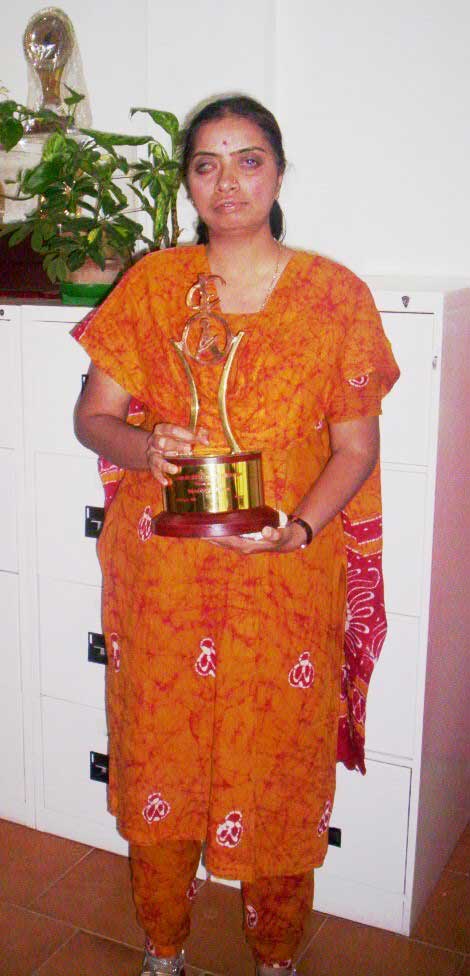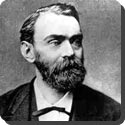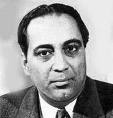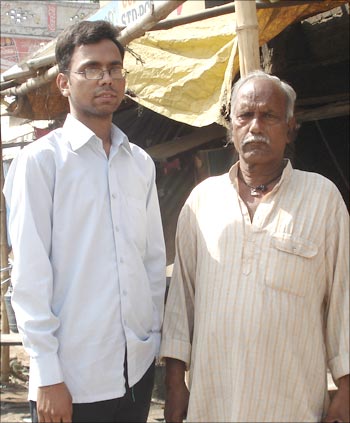Rajni Gopal is India’s first visually impaired woman to become a Chartered Accountant. Currently working with India’s leading software companies, it has taken Rajani immense grit, perseverance and patience to reach where she stands.
Rajani Gopal has come a long way after losing her eye sight. She treads on paths that make even sighted people think twice before taking up. Behind this chartered accountant, Veena player and social worker, lies a determined woman who has defied all logic when it comes to success. Let’s talk to Rajani Gopal and find out more about her.
You work with a reputed IT company. Tell us about your job profile.
I work in the Finance Department. My profile is to work on Indian & U.S.A. Generally Accepted Accounting Practices.
Where were you working before your current assignment? How did you get this break?
I was working for Indian Group of Hotels as Community co-ordinator. I had sent my bio-data to the placement cell of I.C.A.I. and that is how I got this break.
How have you adjusted to your work environment and how have your colleagues responded.
It has been comfortable to adjust to work environment as I am quite versatile on computers. Moreover my work to a large extent is on those applications that extensively support screen reading software.
My colleagues respond very sensibly. There is no discrimination of any sort. Now they know when I need assistance and come forward to give the same. The work atmosphere is very comfortable and friendly.
 Becoming a C.A. is a tough task even for sighted people. As a blind person what motivated you to take up this subject and how did you manage?
Becoming a C.A. is a tough task even for sighted people. As a blind person what motivated you to take up this subject and how did you manage?
That is what many told me when I thought of taking up C.A. as a career. But let me tell you, determination and commitment can help you achieve those milestones which seem difficult otherwise.
I lost vision in my right eye by the time I completed my graduation. I faced few interviews where my candidature was not considered because of my vision problem. I realised that I should have a better education to get a decent and dignified job. At this juncture I came to know about Chartered Accountancy. By this time I had learnt to pursue my studies on my own. I thought if I can pursue B.Com on my own then why not C.A.?
Of course, pursuing the course was not easy. It would be difficult for me to read for long time. I had to read keeping the book close to my eyes. Commuting was also quite difficult. For a moment my spirits would be shattered. But I would realise that this is not the way to tackle a problem. I will have to find out ways and means of solving this. I would read for sometime and then close my eyes and try to recollect whatever I would have studied. This way I was not wasting my time and was also giving rest to my eyes, which I needed the most. As far as commuting was concerned, I would prefer to walk short distances, as catching the public transport was difficult. For long distances, invariably I would take the public transport. It was quite risky but I had to take the calculated risk.
After I lost vision in my left eye too, I had to look for means to continue my studies and clear my examinations. But the important hurdle was to accept that I am visually challenged. This did take some time as I would relate myself with my friends who either had a good job or were happily married. I realised that I should come out of this trauma. Sahaja Yoga meditation came to my rescue. The meditation gave the overall balance which I needed the most. I realised that I should accept the situation and go ahead, instead of brooding. I came to know about the screen reading software and learnt how to use computers. My urge to pursue the course was rekindled. I got all the materials converted to soft copy and started studying. For few subjects I took the assistance of volunteers. I also had to learn how to communicate with the scribe, as I was availing scribe facility for the first time.
What are the special assistive tools you use for help at work? Especially when tackling numbers.
As I have already mentioned, I extensively use computers with screen reading software. My assignment does not include going through any written documents. By using Excel and other M.S. Office applications, I am able to manage my job quite comfortably.
How did you develop your eye problem?
I was prescribed penicillin tablets for common cold. This was given without test dosage and resulted in an allergic reaction which in medical terminology is known as “Steven Johnson Syndrome”. My vision started deteriorating gradually. This was coupled with growth of eye lashes inside the eyes which would constantly itch. I had to visit the doctor almost twice a week to get the lashes plucked. But the damage to the cornea was done and doctors were helpless.
Tell us a bit about your school and college days.
Early school days were as any other normal child. After the allergy, things changed. Because of redness in the eyes, quite a few classmates would avoid me. I had to hear to lot of sympathies from relatives and friends. It would be very difficult to listen. I would try to be all alone by myself. I developed the habit of reading to overcome my loneliness. Initially I would cry and weep. As I grew up I didn’t feel like doing that, for I knew that my parents would be disturbed. I learnt to keep all my emotions to myself. I had very few friends.
At my college things were little different. I was matured enough to handle the situation. I did have friends who were sensible enough. In fact in the final year of my graduation, my friends would write the notes for me, get the books from library, for I couldn’t attend the college due to surgery on my right eye.
What kind of support did you get from family and friends?
There was complete support from my immediate family members. Neither my parents nor my brothers made me to feel at any point of time that I had vision problem. My parents would encourage me in all my ventures as they would encourage my brothers. Even after I lost my vision completely, they would behave as if nothing had happened and gave me all the emotional support.
Though I had very few friends, they were quite sensible and helped me whenever I needed them most. Moreover they would boost my confidence and behave as they would with other “normal” friends.
What are your interests and hobbies?
As already mentioned, I practice meditation-Sahaja Yoga. I enjoy cooking. I play chess. I have learnt to play Veena. I listen to lot of music. I volunteer my services to physically, visually and economically challenged students by providing assistance in their studies.
Tell us any interesting experience you’d like to share.
There have been quite a lot of experiences which have moulded my personality.
As my vision deteriorated gradually, I could see the helplessness of doctors and my parents. At such heart breaking moments, each mile stone in my education would motivate me to go further.
But if you want to know of any particular incident that changes the course of my life, I feel this is it.
Around the time when I lost vision in both my eyes, my father was diagnosed with Leukaemia. It was the prime age of my life and with all confusion I was totally lost and mentally upset. One evening when I just couldn‘t control my emotions, my brother recommended me meditation. He advised that I should do it with open mind and take as hypothesis. I could see within a week that my overall personality was in complete balance and I obtained the necessary confidence and inner strength which I needed the most and which any amount of external counselling wouldn’t have done.
Now I feel, everything that happened was with some purpose and has helped me become a better person move ahead in life with greater strength and confidence
http://www.eyeway.org/inspire/int-rajni.htm













 From her roots in Chennai, where she grew up, Indra Nooyi hitched her career aspirations to a star and has emerged as one of the most recognised icons of corporate success to originate from India, being cited among rankings of global corporate achievers for the past few years.
From her roots in Chennai, where she grew up, Indra Nooyi hitched her career aspirations to a star and has emerged as one of the most recognised icons of corporate success to originate from India, being cited among rankings of global corporate achievers for the past few years. Shooting was not Bindra’s first choice.
Shooting was not Bindra’s first choice.  Immanuel wanted his sons to get involved in his business. On his return to Russia, Alfred joined Robert and Ludwig in research and development in their father’s factory. In 1853, the Crimean War broke out. As a result, the Nobel Steel and Machinery Manufacturing Company benefited by mass-production of military supplies for the Russian army. But in 1856 when the war was over and Tsar Nicolas I died, the
Immanuel wanted his sons to get involved in his business. On his return to Russia, Alfred joined Robert and Ludwig in research and development in their father’s factory. In 1853, the Crimean War broke out. As a result, the Nobel Steel and Machinery Manufacturing Company benefited by mass-production of military supplies for the Russian army. But in 1856 when the war was over and Tsar Nicolas I died, the 




